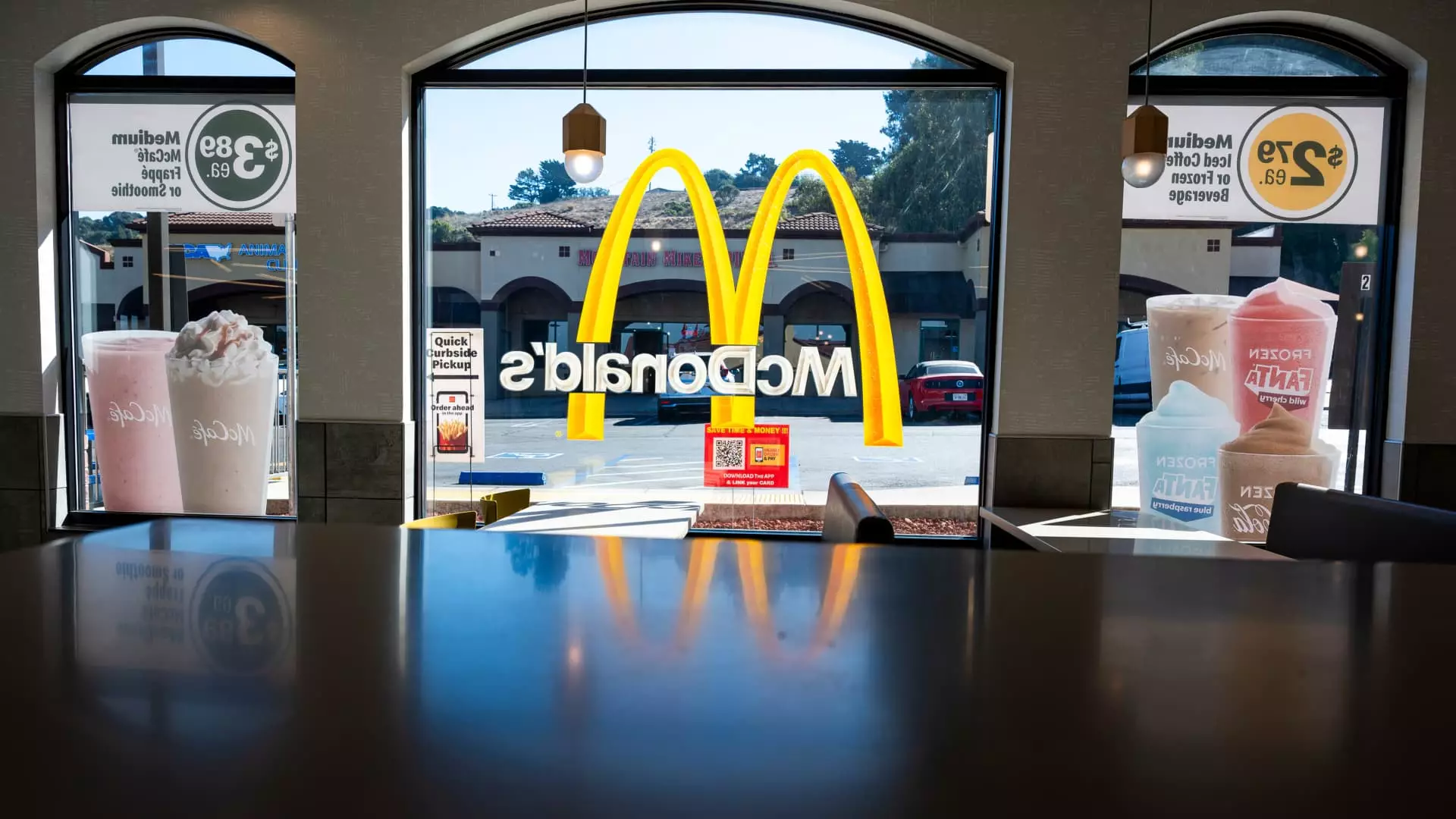As we delve into 2025, the restaurant industry finds itself grappling with a set of challenges that paint a complex picture for executives and investors alike. The phrase “in like a lion, out like a lamb” may succinctly capture the tumultuous start of the year, characterized by unseasonably cold weather, raging wildfires, and a consumer base that remains cautious about spending. In the wake of these hurdles, restaurant chains like Burger King and Popeyes have reported a rise in sales toward the end of the preceding quarter. This uptick can largely be credited to their strategic emphasis on value offerings, which successfully lured customers back from their home kitchens. Meanwhile, even industry titan McDonald’s experienced a discrepancy in traffic, with domestic visits up despite an overall decline in same-store sales.
Yet, as January unfolded, it became clear that the initial momentum had shifted, marking a reversal in trends. Wendy’s CFO Kenneth Cook articulated these sentiments during a conference call, emphasizing the impact of unfavorable industry conditions. Compounded by severe weather across the nation, overall industry traffic faced significant stagnation. While fast-food sales enjoyed a modest rise of 3.4%, this represented a dip from December’s more robust performances. Critical segments like breakfast and lunch saw decreases, hinting at a pervasive consumer wariness—a narrative echoed by Subway’s U.S. President Doug Fry, who emphasized the customer inclination towards quality while remaining in search of value.
Despite the rocky terrain of the beginning months, analysts express cautious optimism for the remainder of the year. Many anticipate a rebound in both traffic and sales as the year progresses, primarily due to less daunting comparisons to last year’s downturns. The historical context reveals that last year’s figures were marked by negative growth for most months, with an exception only for November. Restaurant Brands’ CFO Sami Siddiqui’s predictions forecast easing of year-over-year comparisons into the summer, allowing chains to leverage past declines. However, the “storm” of January —one defined by colder weather alongside wildfires in areas like Los Angeles—significantly influenced individual brands’ performance. For instance, Chipotle Mexican Grill estimated that its same-store traffic suffered a 4% drop due to these adverse conditions.
Chipotle’s statistics inform us of a broader industry trend as the chain grapples with its own hurdles. The company anticipates that its first-quarter same-store sales may remain relatively flat, largely contingent on comparisons to prior successful promotions, leaving them wary as they move into subsequent quarters. This uncertain outlook has led to a noticeable decline in stock prices, signifying the market’s lack of confidence in an immediate recovery.
A recurring factor in this economic saga is the shifting landscape of consumer sentiment, which poses an additional layer of complexity for restaurateurs. As economic fears take firm root—partly fueled by rising inflation—consumer confidence has ebbed to a seven-month low. This dips in sentiment can be ascribed to a variety of concerns, including the looming pressure of rising prices on everyday expenses. Inflation metrics indicate that prices for dining out have risen by 3.4% year-over-year, turning what was once an easy outing into a more calculated spending decision for many households.
While chains like McDonald’s anticipate a potential turnaround as consumer health improves, not every player in the market can afford such optimism. Starbucks, for example, finds itself in a precarious position, facing a troubling streak of declining same-store sales that have stretched over four quarters. The company recently suspended its outlook for fiscal 2025, indicating uncertainty in its growth trajectory. Starbucks’ management has pointed to a slew of factors impacting earnings, from organizational restructuring to significant investments required for future growth.
As the restaurant industry ventures further into 2025, it faces a confluence of adversities that challenge its adaptability and resilience. Executives are left to navigate these ever-changing circumstances while being mindful of consumer expectations, which now hinge on quality, value, and overall dining experience. Moving forward, restaurant chains must remain vigilant, adapting their strategies to address market challenges and consumer sentiments. The potential exists for recovery, but how effectively companies respond to this shifting landscape will determine their long-term success. As the industry feels the ripples of both external economic pressures and internal restructuring, the journey toward profitability will demand not only responsiveness to trends but a deft understanding of the underlying currents guiding consumer behavior.

